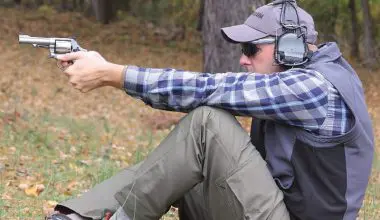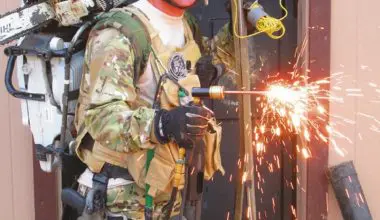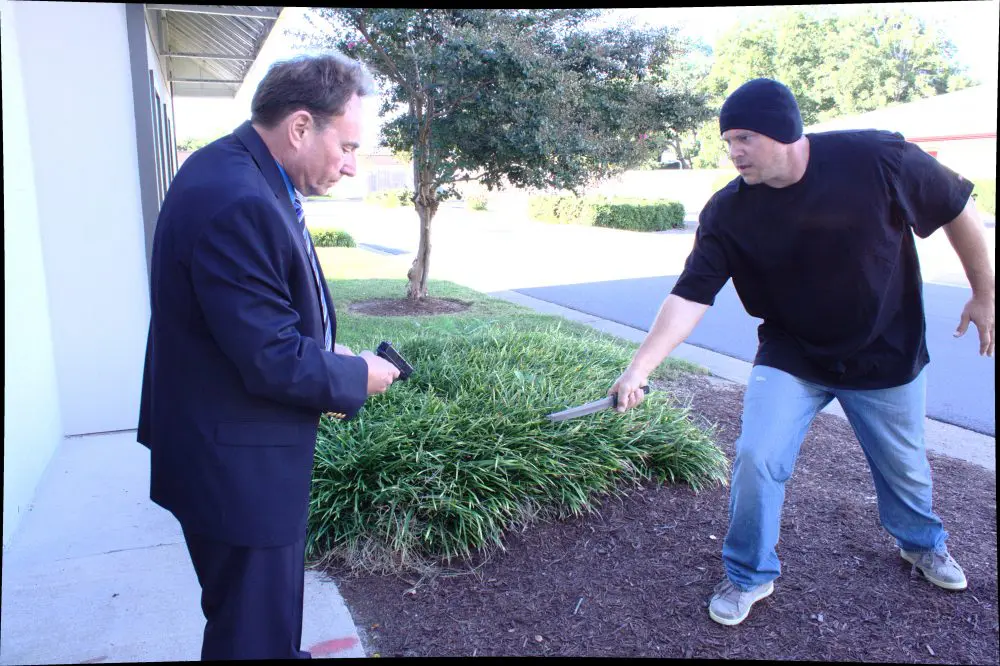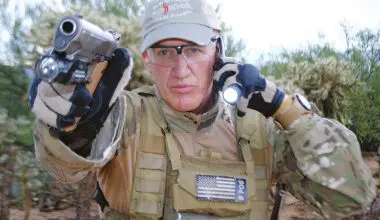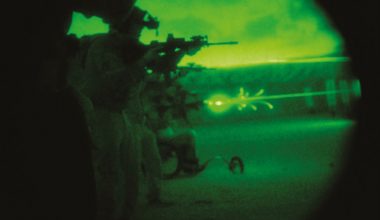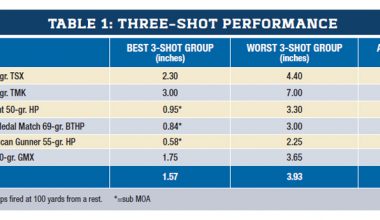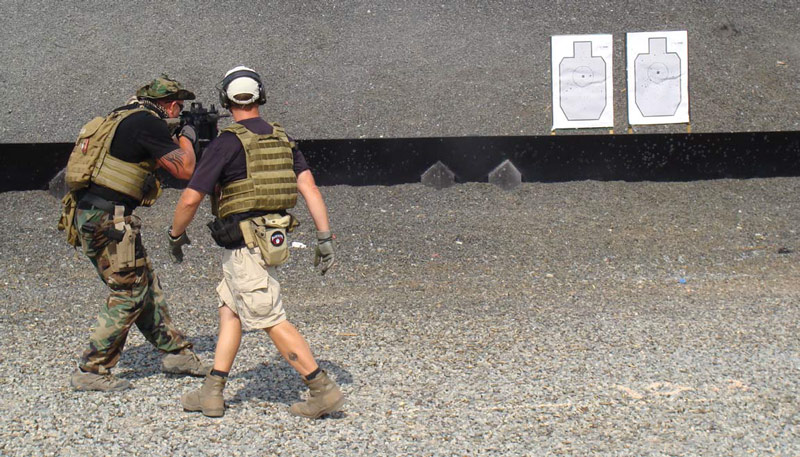
In 2009, the parent company’s name was changed to Xe (pronounced “zee”) and Blackwater was renamed U.S. Training Center in an attempt to reshape its image in the eyes of politicians and the media. However, students and instructors alike still refer to the company as Blackwater, and therefore so will I throughout this article.
This was my first trip to the Blackwater facilities in Moyock, North Carolina, and quite honestly I did not know what to expect. I had wanted to attend a Blackwater course for some time, as Blackwater is reportedly one of the best equipped and staffed training facilities in the world. Still, I couldn’t help but wonder if my trip were coming too late, and if my course would be a shadow of what was once a great program, now worn down by the efforts of anti-war, anti-capitalist and anti-American forces.
In fact, after the first day of our course, the place was buzzing over a major announcement: Erik Prince was going to sell Xe. Prince hoped that his departure from the company would finally quiet its enemies. Naturally, some of us in the class began to wonder what this would mean for the future of this organization.
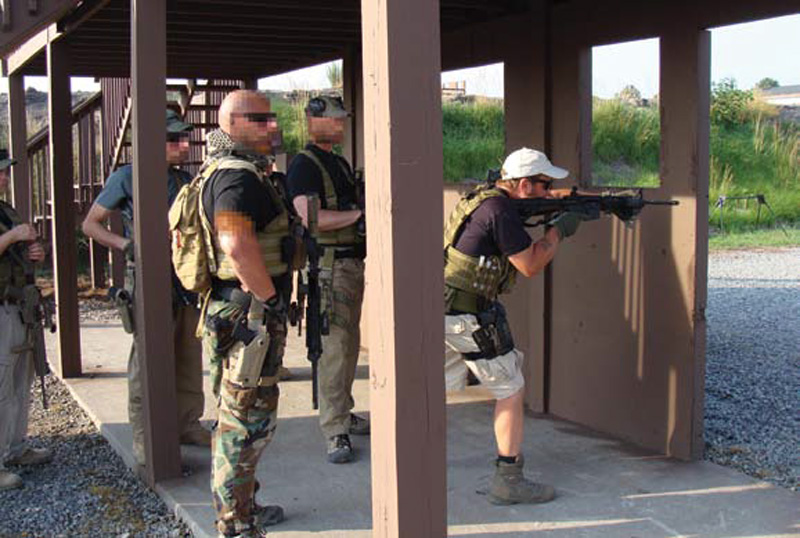
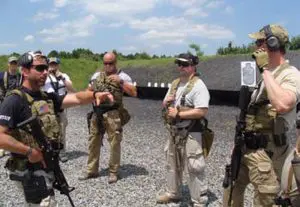
Table of Contents
CARBINE OPERATOR
The five-day Carbine Operator Course has no prerequisite, but by no means is it a beginner’s course. If you are unsure whether you have the experience necessary to attend this course, ask around. Your colleagues and former training instructors— not to mention the folks at Blackwater—can help you.
All students in the class already had a solid foundation with the AR platform. Backgrounds and experience varied widely and included law enforcement, military, competition shooters and private citizens.
What follows is my experience. Early on, it was made very clear that Blackhawk handles each class differently. The most important thing is safety—no student would be asked to do something that is too advanced for him. If you attend (or have attended) a course at Blackhawk, you may experience something slightly different than what I’m going to report— but that is a good thing. Whenever possible, classes should be tailored to best fit a group’s needs.
We were told that our group was one of the more advanced groups to come through the five-day Carbine Operator Course. If you experienced something different, consider that you may have gotten exactly what you needed.
The following is a very brief overview of the class. It’s difficult enough to cover a one- or two-day course in an article—I could write a small book on what we accomplished in this five-day course.
TRAINING DAY 1
Carbine Operator began with an introduction by our lead instructor, Coy, and some brief classroom instruction on the basics of carbine operation. This was a time not only for the students to see what lay ahead, but also for the instructor to see what experience the students already possessed.
Throughout the course, we would be instructed by other members of the Blackwater cadre, including Tony and Woody, but Coy was a constant presence and did the great majority of the work throughout the course. [The instructors’ last names have been withheld at their request.]
Leaving the classroom behind, we moved to the range, where Coy gave us a safety briefing and detailed instructions in case of an emergency. Water was provided and hydration heavily emphasized. Students need to bring some form of hydration with them, as we often went through the water that Coy provided and much of our own.
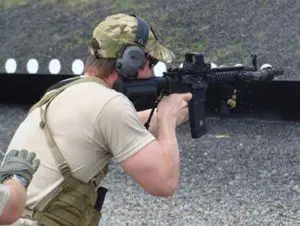
Our first drills were basic, including ready positions, trigger reset and followthrough. As we moved into malfunction drills, it became evident that I was going to have a hard time unlearning many things that I had been doing for so long. Coy made it very clear that there was no such thing as “the” way to do anything, but asked us to give “their” way an honest effort.
Every time a student came across something that differed from his own method, Coy took the time to discuss the differences and respected student input—although to my recollection, he was always right. This illustrates one of the great advantages of a five-day course: you have the time to disseminate and collectively think through problems, which makes learning more permanent and enjoyable.
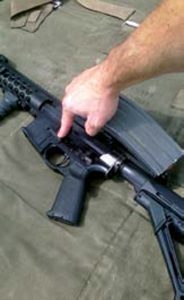
Day 1 convinced me that I had to put faith in my instructors. I made a conscious decision to not cheat and do things “my” way, even though I was very comfortable in my own little world. Once I was determined to go all-in, the class went much more easily for me. I have to recommend that every student do the same.
I’ve spent so much time using low ready and entry ready that when high ready and high port were covered, it honestly felt awkward. High port was used heavily throughout the week, because it reduces the likelihood of the shooter burying their muzzle in the dirt, and allows the shooter to conduct reloads more efficiently, since the gun is “up in your workspace.” Coy used that phrase a lot, stressing the importance of doing administrative actions near the face so you don’t have to take your eyes off the fight.
In the same vein, scanning was a huge part of the class. While most students were used to scanning after strings due to their previous training, I think everyone— including me—was amazed at how we were still suffering from tunnel vision, even though we were looking around.
Coy helped break us of this by asking us to search for specific things when we were scanning. For example, if we saw a number while we scanned, it meant he wanted that many additional rounds on target. Or he might ask us what color something was. If we were properly scanning, we should remember, right? He got creative and made us search hard—and he continued to keep us on our toes throughout the entire class.
TRAINING DAY 2
Day 2 began with another safety brief. In fact, every day began with the same safety brief, which reminded students where the first-aid kit was located, how to operate the range radio in case a student had to call for help for an instructor, and what the range number was (essential information in a sprawling facility with so many ranges). Never once was safety compromised during this course.
We then spent a short time reviewing the previous day’s lessons, with each student taking the time to “teach” one small part to the rest of the class. This was a great way to reinforce lessons learned and to ensure the foundation was set for the rest of the day’s lessons. Along with the safety brief, student instruction would be repeated at the start of each day during Carbine Operator.
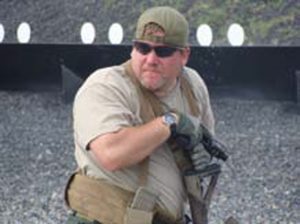
The rest of Day 2 concentrated on simple movement. Students were typically given a starting ready position and then commanded to move in a certain direction. Sometimes we were given the command to change direction several times, and other times we were given the “threat” warning immediately after we started moving. The drills slowly increased in complexity and exertion level as the instructors closely monitored student performance.
TRAINING DAY 3
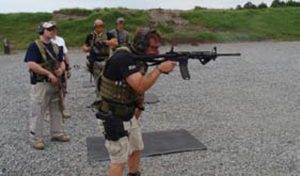
Day 3 built upon Day 2’s moving and shooting. Coy stressed the importance of walking backwards when moving laterally against a target that is on your strong side. You could see that some folks were crossing their legs simply because that was how they’d always done it. After some practice, however, everyone realized how much easier—and safer—it is to move like that.
We then moved on to one-handed shooting and manipulations, from the strong side and the weak side. This was challenging for everyone, but something that many classes do not touch. A lot of people don’t consider that in the middle of a gunfight, you might lose the use of one arm, and that’s not when you want to try clearing a Type Two malfunction onehanded for the first time. While we’re on the subject, here’s a little tip: using a spare magazine, you can move the charging handle to the rear and still reach the bolt catch.
A lot of time was spent on one-handed operation. We all remarked how little experience we had with this, and Coy took the time needed to give us the proper instruction and let these new techniques build a little muscle memory. We all had calluses and sore muscles the next day— and boy, did it feel good!
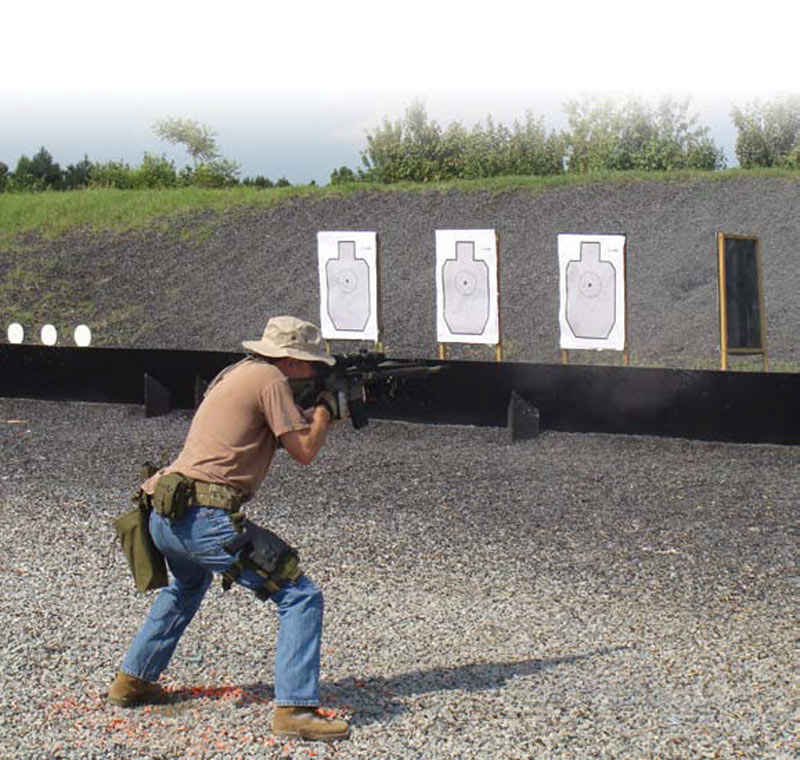
TRAINING DAY 4
Coy fired up the moving target system, and after we’d all had an opportunity to try shooting the mover, we added the previous day’s lesson to the mix. That is, we shot a moving target while we were also moving. This provided another dimension that more closely simulated real fighting, although many schools simply do not have the resources to do this.
There were two mock structures on the range that day. Each one had multiple windows, doorways, and stairs. It was the perfect device for teaching the finer points of shooting from cover and odd openings.
One student watched as Coy placed his rifle right on a windowsill during a demonstration, and asked Coy whether that was practical. The student had always been taught not to rest his rifle on cover. Coy explained that if you’re in the middle of a fight, your heart is pounding and you’re gasping for air, you’re going to rest that rifle if there is something available. And no, there was no serious loss in accuracy at practical carbine distances.
We continued with advanced shooting positions, including a version of rollover prone that I had never tried before. In the past, I’d always moved my bottom leg to the rear and my top leg forward. Coy advocated lying in a fetal position, which I now prefer—it’s quicker to execute and feels more natural. Instead of returning my weak hand to the foregrip, I learned to lay the rifle on top of it, like you might do with a cue stick when shooting pool. This “cue stick” tip was another one of those very simple things that I had simply never thought of before, but will use going forward.
As night fell on Day 4, we moved into my favorite drill of the week. After instruction on low-light shooting and some practice, we individually took turns with an array of shoot/no-shoot targets in the dark.
Each student had to wait for the sound of the target turning, switch on their light, distinguish friends from foes, and act accordingly. Students got to test their skills and equipment during the night shoot, as most had little to no experience in this area, myself included. Some complained about their muzzle flash, especially those running muzzle brakes, but none seemed too adversely affected. However, I was pleased that the three-prong flash-hider on the end of my Noveske barrel completely eliminated flash. A big thank you goes out to John Noveske for recommending it.
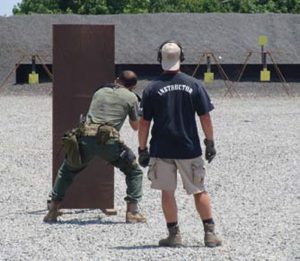
TRAINING DAY 5
As expected, we started Day 5 by reviewing what we’d learned on Day 4. Coy stressed movement drills, and if I were to guess, he was making sure that our movements were absolutely safe ahead of the final drill. That’s because the final drill was a cumulative test that would push us to our limits.
This final drill was shot with one shooter at a time. It involved stairs, steel poppers, steel swingers, moving and shooting from several pieces of cover, rollover prone and a lot more stairs. We ultimately ran to the roof of a four-story tower, with Coy close behind yelling “MOVE!” and detonating a flash bang to make damn sure we were stressed and winded. Our final target once we reached the roof? The moving steel target, only this time it moved in and out of concealment.
Remember that question Coy was asked about resting your rifle on cover? As I set up for my shot, I absolutely had to rest my rifle on the roof rail of that tower. Doing so provided a stable platform, and with it I was able to hit the mover four times. Everyone used that rail.
We finished up the final day with a relaxing shoot on the long-distance range at Blackwater. We shot at increasing distances, stopping at 400 yards, even though the range itself goes out to 1,200. Several of us tried to make pistol shots from 100 and 200 yards, for no other reason than to say we did it. After busting our butts and learning so much over the past week, our egos were swelling a bit. Can you blame us?
THE REST OF THE STORY
The Blackwater facilities are incredible. I really can’t say more. I mean, I really can’t—I’m not allowed to. I had to agree to keep my focus and my camera on my class, as a condition of allowing me to write this article. Suffice to say, whatever class you take at Blackwater, you will have the very best facilities at your disposal.
If you’re at all impressed with the amenities described for Carbine Operator, believe me, they’re just the tip of the iceberg. Go to Blackwater’s website and check the page on courses, and you’ll get an idea of what I’m talking about.
As good as the facilities are, they aren’t the best things about Blackwater. The instructors are thorough, safe, experienced and humble. Sure, they’re all Type A personalities, but there is no Hollywood gimmick or pomp here. As great as it was to have all those buildings, moving targets, and steel plates, it was the cadre that made this class so top-notch. Cheers to Coy, Tony, Woody, and the rest of the staff. The next owner of Blackwater will be very lucky to have them.
It’s clear that while the name or the owner might change, Blackwater is here to stay. The facilities in North Carolina are astounding and the instructors clearly some of the very best in the world. To deny our country, military and allies this level of quality training would translate to many good lives lost.
All the students in my class expected the very best, and nobody went home disappointed. I’m already making plans to return. See you there.
